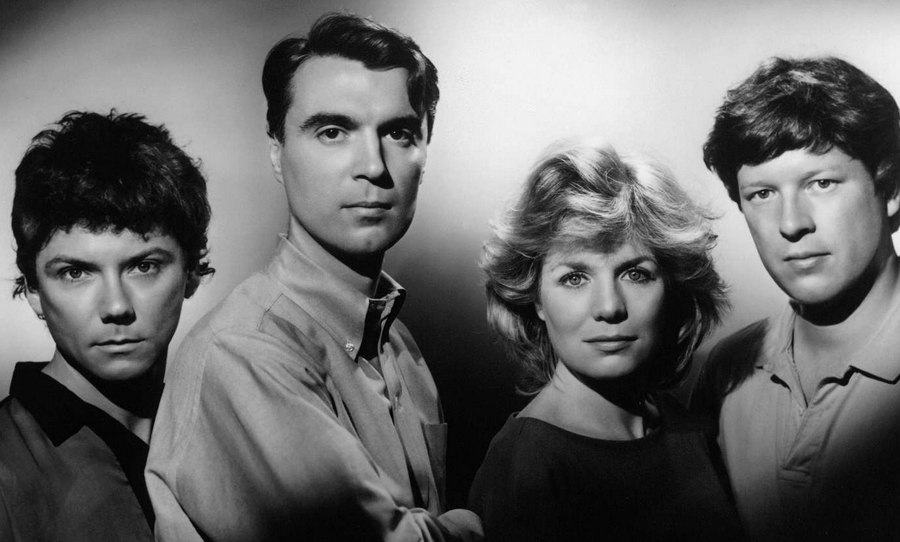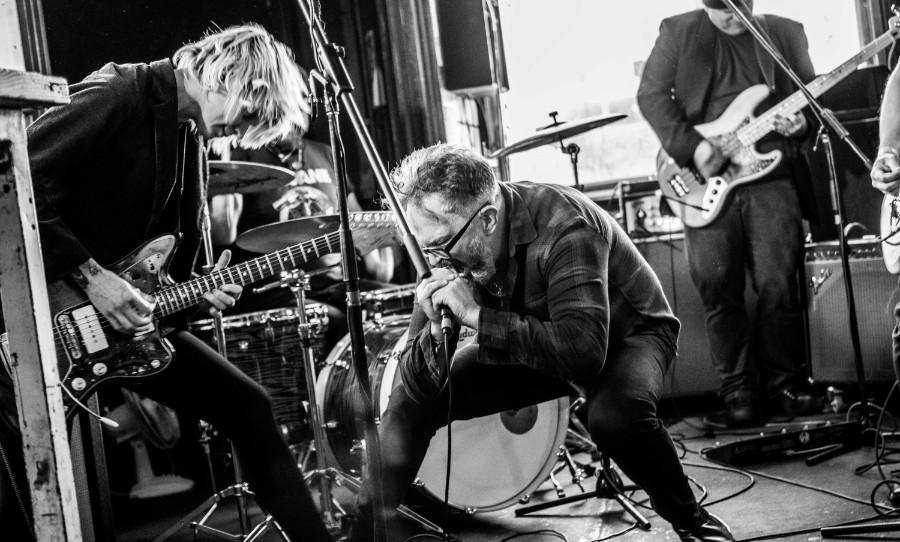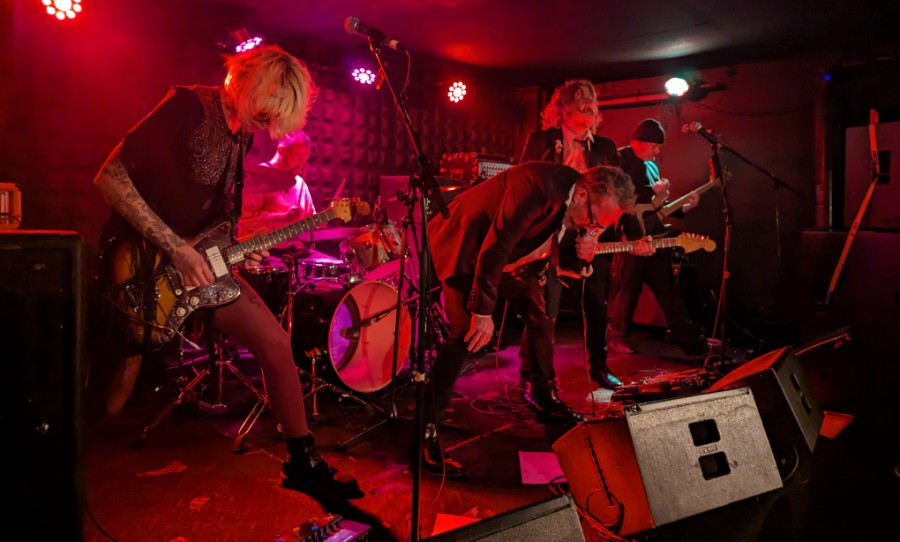Talking Heads’ Remain in Light expanded the vernacular of rock, embracing an experimental approach to a style that had become bloated on ego.
It’s an album that regularly appears on many ‘greatest album of all time’ lists and appeared on Rolling Stone’s 500 best albums of the ’80s in 1989. At its release in October 1980, Remain in Light signalled a change in Talking Heads’ approach to how it made music. Prior to this, the band was known as a post-punk three (and later four, with the inclusion of guitarist and keyboard player, Jerry Harrison, formerly of The Modern Lovers) piece band playing the 1970s New York punk and new wave scene alongside the likes of Blondie and The Ramones at clubs like CBGB. They had three albums on Sire Records at that point: Talking Heads: 77 (1977), More Songs About Buildings and Food (1978), Fear of Music (1979).
Talking Heads have always had a profound sense of intellectualism in their music, and their fourth outing is no exception. The genesis for Remain in Light can be found in the previous album’s lead single I Zimbra, which takes inspiration from the polyrhythms of African music and served as inspiration for jam sessions to help figure out what Remain in Light was to become. This album also became the third to feature former Roxy Music member and experimental musician Brian Eno as part of the album’s production team.
Eno worked with Byrne and the band to create music where a bricolaged, interlocking approach to music in a rock context was revolutionary at the start of the ’80s — a world where punk music had begun to fade away and was being sold off piecemeal as an aesthetic, reliable sampling had only just become a reality (but only for the well-heeled or esoteric musicians), and legacy rock acts were creating gigantic metaphoric and sincere operas (I’m looking at you, Pink Floyd). In this environment, the mad genius (and critical sincerity) of Remain in Light is apparent.
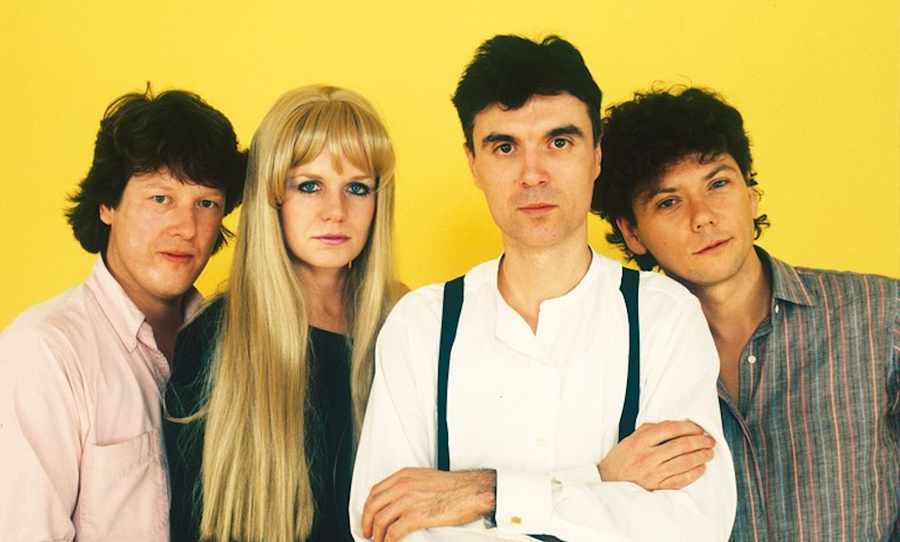
A trip to the Caribbean
The recording process began early in 1980 at Compass Point Studios in Nassau, The Bahamas. Husband and wife band members Chris Frantz and Tina Weymouth had taken a break from the band to figure out their place. There was so much friction over the previous album that they were seriously considering leaving the band (or being fired, depending on whose story you believe). The vacation to The Bahamas was a breath of fresh air for the Heads’ rhythm section, as playing with reggae legends Sly Dunbar and Robbie Shakespeare and working as part of the ‘Compass Point All Stars’ had opened up some new sonic possibilities.
Other influences on Remain in Light included African music such as the work of Nigerian songsmith Fela Kuti and African polyrhythms and field recordings of musicians, non music sources (including John Dean’s Watergate testimony, Christian radio preachers, and academic literature on African spirituality) while also appropriating ideas from the nascent hip hop genre, where DJs would repeat sections of a record for rappers to rhyme over (known as ‘toasting’ in the Jamaican musical scene) all served to help create the new sound that the band was looking for on the album.
Drummer Chris Frantz sums up the mood at the time, as written in his memoir Remain in Love (care of Rolling Stone):
“We loved pop music, we really did. But now we were interested in creating sounds that would take us deeper and far beyond what people had come to expect from us.”
Going beyond what people had expected from Talking Heads – obtuse lyrics about daily life, exceptionally tight and nervous rhythm sections and an enigmatic frontman – would define Remain in Light.
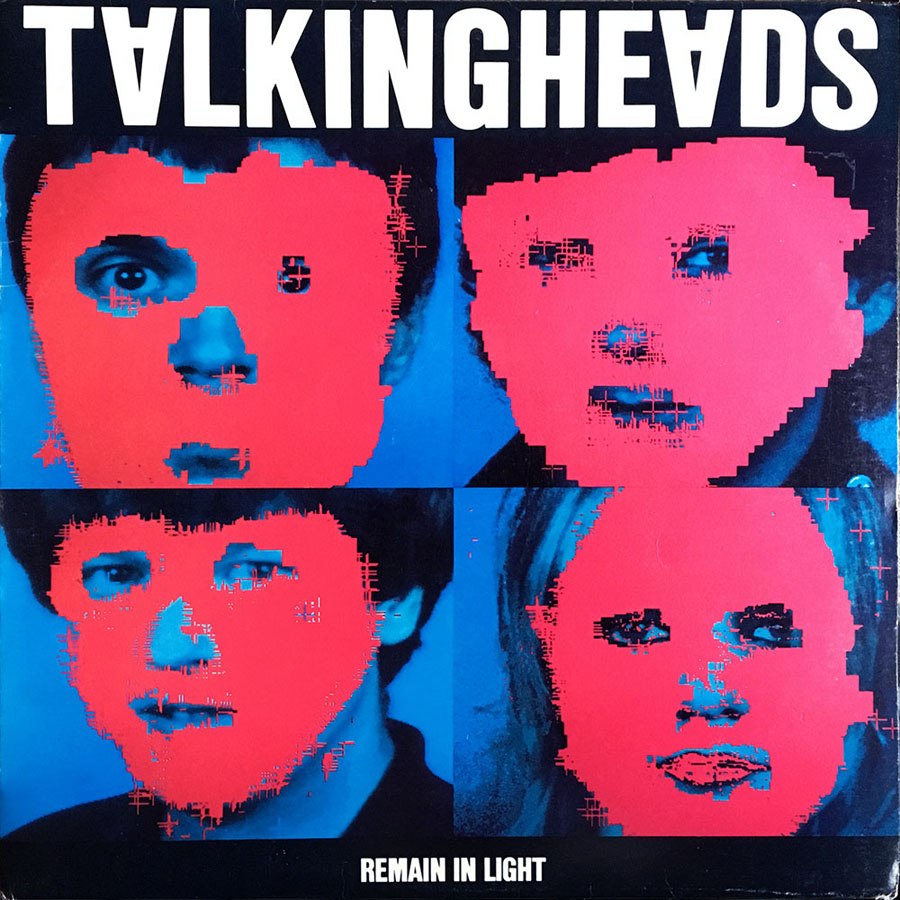
As the band reconvened at the Compass Point to record, one new approach was the adoption of a collage process. While Remain in Light isn’t strictly a sound collage, the way that Eno’s production techniques are deployed make Remain in Light act in a way that it could definitely be one and drawing inspiration from the experiences of previous jam sessions, the band decided to experiment and see what would happen.
This sense of communal playing was very different to anything they’d done previously and in the same inspirational vein as Afrobeat, western rhythms of funk and jazz were fused with the concept of polyrhythms. The main instrumental tracks — built out of extended jamming sessions at the Compass Point studios — were completed in as little as two weeks, and were a novel approach for a rock band at the time. Being built from jams, the instrumental portions of Remain in Light can be described as ‘modular music’ (to borrow a phrase coined in David Byrne’s book How Music Works) where the band would work around a repetitive groove and Byrne would supply lyrics to suit.
David Byrne, speaking to the Library of Congress on the creation of Remain in Light (care of Rolling Stone):
“…our process led us to something with an affinity to Afro-funk, but we got there the long way round, and of course our vision sounded slightly off. We didn’t get it quite right, but in missing; we ended up with something new.”
Before Remain in Light
That process was being refined before Remain in Light when Byrne and Eno would work together on My Life in the Bush of Ghosts, an album that relied heavily on sampling and the use of found sounds and elements of what would become known in the ’80s as ‘World Music’. Not only does the album revel in traditional rock instruments (featuring Adrian Belew on guitar, who would also appear on Remain in Light, where his most notable contribution was the guitar solo on The Great Curve), but it also uses the aforementioned non-musical elements to create music, in much the same way avant-garde groups like the Art of Noise did by way of the sampler.
Listening to Bush of Ghosts, you can hear elements of Remain in Light: such as the rhythm and the inspiration drawn from the samples themselves, which is especially apparent in the track The Jezebel Spirit. This track in particular conveys the spirit of both I Zimbra, and the Remain in Light twins, Right Start (an outtake added to CD reissues of Remain) and the album’s most famous contribution to pop culture, Once in a Lifetime. Unlike Bush of Ghosts, Remain in Light retained its experimental soul while also being more accessible as described in How Music Works:
“We didn’t intend to use the found voices or cardboard drums this time, but the process of creating repetitive tracks and then making sections by switching instruments on and off using the mixing board was retained.”
The lessons learned in the studio for Bush of Ghosts would then be applied to working on Remain at Compass Point.
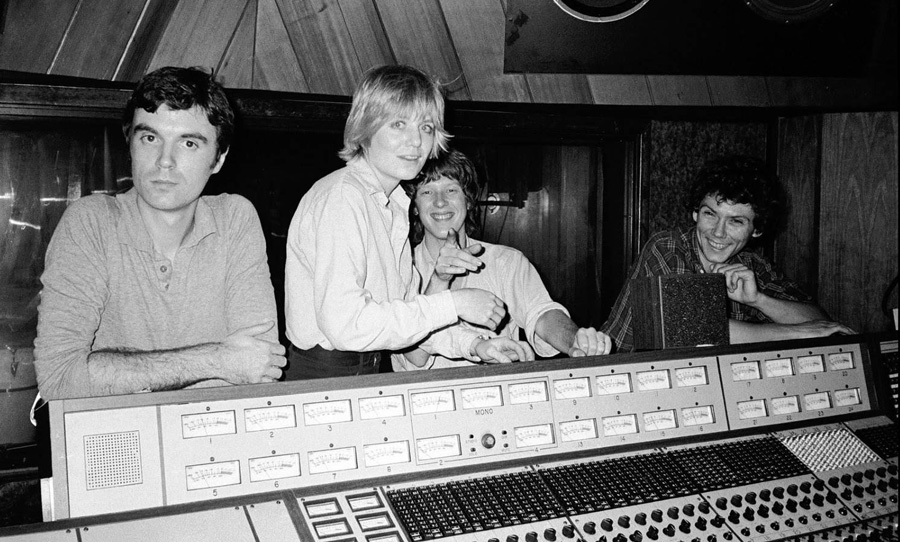
Eno and Byrne: studio wizards
In addition to the initial Compass Point sessions which furnished the album’s basic musical structure, Remain in Light was also worked on at Sigma Sound Studios in Philadelphia up until the release in October of 1980. Personnel (excluding the band themselves) were Brian Eno and Dave Jerden as producer and engineer, Nona Hendryx on backing vocals, Adrian Belew and Robert Fripp on guitar and Robert Palmer on guitar and percussion.
From a technological standpoint, the album not only used complex manipulation of the mixing console, but was also bold in its use of effects and other sonic trickery. One instance of Remain in Light’s use of effects to create a unique ambience feel was achieved with the help of a Lexicon 224 Digital Reverberator. The early ’80s marked a juncture of analog and brand new digital technology, the latter giving Jerden and Eno a novel way to explore the concept of artificial space.
On Once in a Lifetime the ‘underwater’ sound effect that was one of the song’s hallmarks comes courtesy of another Lexicon product, the Prime Time delay effects unit. With a straightforward control layout, the Prime Time Model 93 has a flexible pair of delay outputs, ranging from 0 to 256ms (milliseconds), along with a special delay effect which could last up to two seconds, along with a 90dB dynamic range and a Voltage Controlled Oscillator for effects like vibrato, and an onboard mixer for delay. Jerden describes working with Byrne and Eno on Once in a Lifetime, in an interview for Tape Op Magazine:
“…As David was singing, Brian started messing with the knobs and it got that underwater sound by happenstance. Brian Eno loved mistakes, and he called those “epi events” — episodic events.”
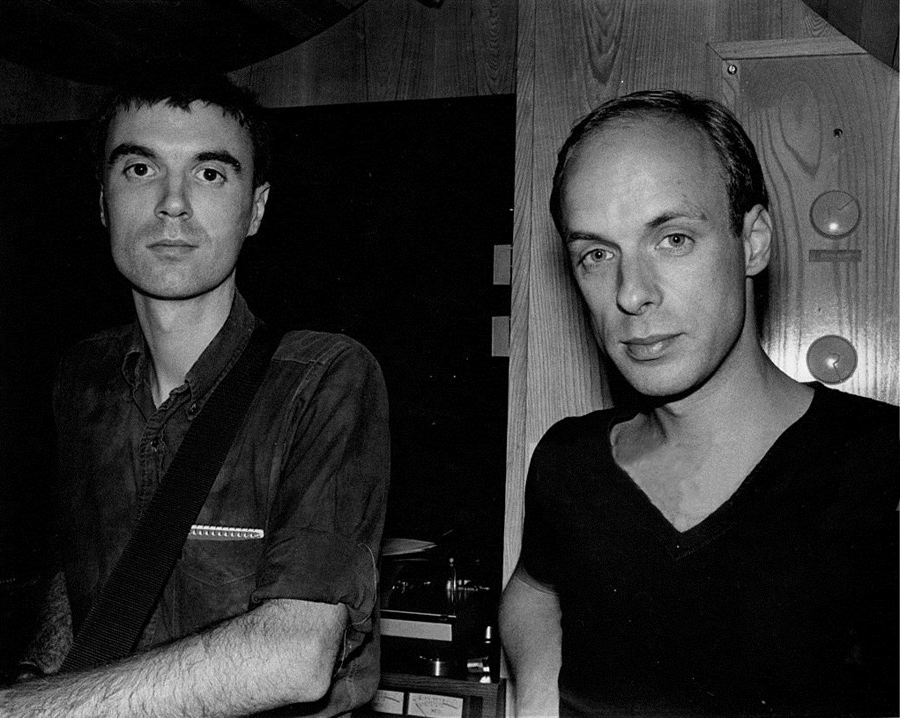
Meanwhile, the 224 reverb can be heard most prominently in the album’s closer, The Overload, as well as Listening Wind. The Lexicon was equipped with a 20 kHz sample rate (the later 224X had a sample rate of 34.5 kHz), with a unique circuit that gives an extra 24 dB of gain, as well as four rack slots and interchangeable programs which simulated chamber, room and plate reverbs. In addition, other musicians were brought in to help with the recording process, such as Adrian Belew (of King Crimson fame) using a Roland guitar synth (most likely a GR-300 synthesizer and G-303 controller, which can be seen in the Talking Heads film, Stop Making Sense). It’s heard most prominently on The Great Curve, along with that song’s themes of tribal religion, and African inspired rhythm thanks to Robert Palmer on the bongos.
The GR-300 has a six-voice polyphony, with two oscillators each (which are voltage-controlled and harmonically locked to each string), along with a 24 dB low pass filter with an envelope control for each octave. To eliminate wild fluctuations in amplitude, the GR-300’s envelope creates a noise gate by limiting the amount of gain from each note, making for a complex sound that employs every note clearly. While it wasn’t the first post-punk or new wave album to incorporate inspiration from found sounds and synthesised technologies, it’s the most impactful with overdubs (thanks to the 24 tracks available at both studios) and extended single chord jams.
Unlearning the pop song: the lyrics of Remain in Light.
You can’t talk about Remain without talking about the songs, how they fit into the album’s themes, and how they all came together to form the whole. Side one of the record has songs which are bright in their instrumentation and just plain funky: Born Under Punches (The Heat Goes On), Crosseyed and Painless and The Great Curve having beats which are very much on the dancey end of the musical spectrum, and featuring upbeat lyrics about the world we live in, and finding a place to fit in it.
“While punk rock was celebrated for needing only three chords, we had now stripped that down to one.” – David Byrne, How Music Works
Side two — Once in a Lifetime, Houses in Motion, Seen and Not Seen, Listening Wind and The Overload — has musical motifs which are less expressive and darker. The songs on this side are the opposite to the first, where a reflection on modern life and consumerism (among other topics) comes to the fore.
The lyrics for Remain eschew the experiential lyrics of prior records (such as Artists Only from More Songs About Buildings and Food, or Paper from Fear of Music), for ones which are more integral to the musical information. “The gently ecstatic nature of the tracks meant that angsty personal lyrics like the ones I’d written previously might not be the best match, so I had to find some new lyrical approach,” says David Byrne in How Music Works. “I filled page after page with phrases that matched the melodic lines of the verses and choruses, hoping that some of them might complement the feelings the music generated.”
Side One
The album opens with Born Under Punches — with its chaotic wobbliness and Adrian Belew’s guitar solo sounding more like a form of alien communication than any human instrument, while Tina Weymouth‘s low and funky bassline, holds the track down. In this track, it’s easy to hear the influence of swirling polyrhythms and hypnotic instrumental layering. The lyrics — keeping in mind that Byrne wanted the lyrics to complement the rhythms — contain yelps and rumbles of gibberish from Byrne himself, as well as a message about a man out of his depth, the left hand (of the government man) not knowing what the right one was doing. It sounds constrained, claustrophobic even, and has echoes of what the album will throw at the listener over the next 40 or so minutes:
Take a look at these hands/The Hand Speaks/The Hand of a Government Man/Well I’m a Tumbler/Born Under Punches!/I’m so Thin.
Compared to the album’s opener, Crosseyed and Painless is a much more straightforward affair, with a ringing guitar opening, metallic percussion, all underpinned by vocal overdubs (creating a silken effect similar to 10cc’s I’m Not In Love). The bass plays a looping rhythm, as it reflects lyrics that are about factual information — what’s true and what isn’t in the eyes of Byrne the nervous narrator:
There was a line/There was a formula/Sharp as a Knife/Facts cut a hole in us x2/Facts are useless in emergencies/The feeling returns whenever we close our eyes/Lifting my head/Looking around inside.
Interestingly, this track also came with a music video – a new art form at the time – but didn’t feature any members of the band. Instead, it features breakdancers — a fast developing culture in New York City at the time. The hip hop connection continues most strongly in this song, when Byrne begins to rap about the nature of facts in the bridge.
The strongest references towards African musical culture on Remain comes to the listener in the form of The Great Curve. The layered polyrhythms and musical layering that Remain inherited from its influences of both African music and My Life in the Bush of Ghosts can clearly be heard here, as can the use of the aforementioned GR-300 guitar synthesiser to help create a swirling effect. This is also reflected in the lyrics, which again, lean heavily on themes of tribal religion:
Sometimes the world has a load of questions/Seems like the world knows nothing at all/The world is near but its out of reach/Some people touch it/But they can’t hold on/The World moves on a woman’s hips/The world moves as it swivels and bops/A world of light/She’s gonna open our eyes up.
Side Two
The second half of Remain In Light opens with Once in a Lifetime, the album’s lead single, being released in February 1981. The genesis of the track was from a studio jam called Right Start, as well as lessons learned and inspiration taken from the sessions from My Life in the Bush of Ghosts and Fear of Music. Side Two of Remain as a whole is the negative charge to side one’s positivity and spirituality, and Once in a Lifetime eases the listener into that side’s themes gradually.
The track is built around a singular bass line that snakes its way throughout the song, and again, utilises Eno’s technique of cut and paste overdubs (except for the bass, which when you listen closely, doesn’t change much throughout the track). Other instruments such as the percolating organ and synthesizers provided by Jerry Harrison and Eno, as well as contributions from Robert Palmer and the rest of the band are layered on top of one another, gradually overwhelming the senses.
Speaking of senses, the track was also famous for that video. Choreographed by Toni Basil, the video helped propel the band into popular consciousness, as it was on heavy rotation in the early days of MTV. It solidified Talking Heads as a unique visual presence in the popular consciousness at a time where the music video was quickly gaining traction and crucial to any given artist’s commercial success.
Lyrically, Once in a Lifetime is the starkest of all the songs on the album. It deals with themes of consumerism, life passing you by, and what some might cynically describe as middle-class ideals (a large automobile, a big house, etc). In How Music Works, Byrne describes his lyrical concept:
“I started by taking on the character of a radio preacher I’d heard on one of my cassettes. There was a serious use of anaphora – emphasising the same phrase to begin each sentence…the repetition of the phrase ‘You may find yourself’ for example – were lifted straight from the radio preacher…so the mention of the beautiful house, the beautiful wife, and the trappings of an ideal life would have been a natural segue for me.”
The following track, Houses in Motion is a warped cousin of Once in a Lifetime. With unsettling horn arrangements which punctuate the rhythm section (thanks to Eno collaborator, trumpeter Jon Hassell), the instrumentation is also the opposite of songs such as The Great Curve; driven mostly by trumpets and bass, with the guitar and double vocal overlays supporting the rest of the track. Houses in Motion was released as the second single from Remain, and its lyrical expression is one that is much colder, in contrast to the sunny euphoria of The Great Curve, or the scattered nature of Crosseyed and Painless.
The offbeat, surrealist and overall character of Houses in Motion continues into Seen and Not Seen, where the entire delivery of the lyrics is more akin to spoken word poetry than rock music. Seen and Not Seen is heavily influenced more by dub reggae than brass abstraction, and this is mostly heard in the rhythm section with a percussive stomp-clap motif accompanied with yet another looping bassline. Topped off with crystalline keyboards and guitar treated with the Lexicon delay unit mentioned earlier, it sounds like computerised technology from the far future, rather than a conventional instrument.
In Seen and Not Seen, the lyrics zoom out to the third person, and compared with the manic delivery and preacher character of Once in a Lifetime the vocal delivery is in a deadpan, spoken-word style, with no recognisable song structure:
“He would see faces on TV, in magazines, and in books. He thought that some of these faces might be right for him/And through the years, by keeping an ideal facial structure fixed in the back of his mind that he might, by force of will, cause his face to approach those of his ideal/Maybe they imagined their new face would better suit their personality/They may have picked an ideal appearance based on childish whim, or momentary impulse.
Remain In Light’s penultimate track – described by Far Out Magazine as “the weakest song on the album”— is Listening Wind. While the other tracks have their preacher characters, the character of Mojique and the overall lyrical content of Listening Wind is inspired by acts of terrorism such as the actions of the Baader Meinhof group. While Listening Wind reflects a dark undertone in lyrics and musical content, the final track of Remain In Light jumps off into the unknown.
Remain in Light’s closer, The Overload can best be described in one word: sparse. David Byrne’s singing sounds pained — akin to a shamanic incantation — and sonically speaking, it could be seen as a cousin to Listening Wind. Easily the most prog of all the tracks on Remain, the instrumentation is simple, with pulsating keys, backed with a stomp-click pattern for the bass and percussion, while Belew’s guitar work clearly highlights his prog-rock roots, with the digital delay and reverb working overtime to create enormous chasms of musical space.
The lyrics could be interpreted as post-apocalyptic, or even the aftermath of Listening Wind. The whole musical and lyrical package was apparently inspired by Joy Division — or Talking Heads’ idea of what that music might sound like:
The gentle collapsing/Of every surface/We travel on a quiet road/The overload.
With the music and lyrics of this final track in mind, the supposed link to the Mancunian foursome becomes somewhat more evident, but it also serves to highlight how wide a net Remain in Light cast with its musical choices.
How did we get here? Remain in Light’s impact
At the end of the decade that started with Remain in Light, Talking Heads’ last album, Naked, was released in 1988. But what happened in between? Remain was very much a turning point for the band. Transcending traditional rock — albeit with a new wave slant — to a sound that incorporated a much wider variety of influences from all over the world.
What happened immediately after was a short hiatus, followed by the albums Speaking in Tongues and Stop Making Sense, released in 1983 and 1984 respectively. While still incorporating elements from Remain, such as the bizarre, Dadaist lyrics (at this point, a Talking Heads trademark) and complex instrumentation, the polish of Speaking in Tongues and the sheer theatrics of Stop Making Sense mark the logical endpoints of the four to five year project that Fear of Music and Remain in Light started, culminating in the performance of Once in a Lifetime from Stop Making Sense (big suit and all — something even Kermit the Frog sought to imitate!).
Without Remain in Light, it’s pretty safe to say that popular culture as a whole would be a whole lot less weird and more risk-averse. With this album, the band went far beyond what was known of them — and expected of them. Rethinking the construction of the record cemented them in the minds of the public as a band who wasn’t afraid to experiment, take risks, and be at the vanguard for sheer, esoteric weirdness. But for all that eccentricity, Remain in Light still extends an invitation to the dancefloor, four decades after its release.
